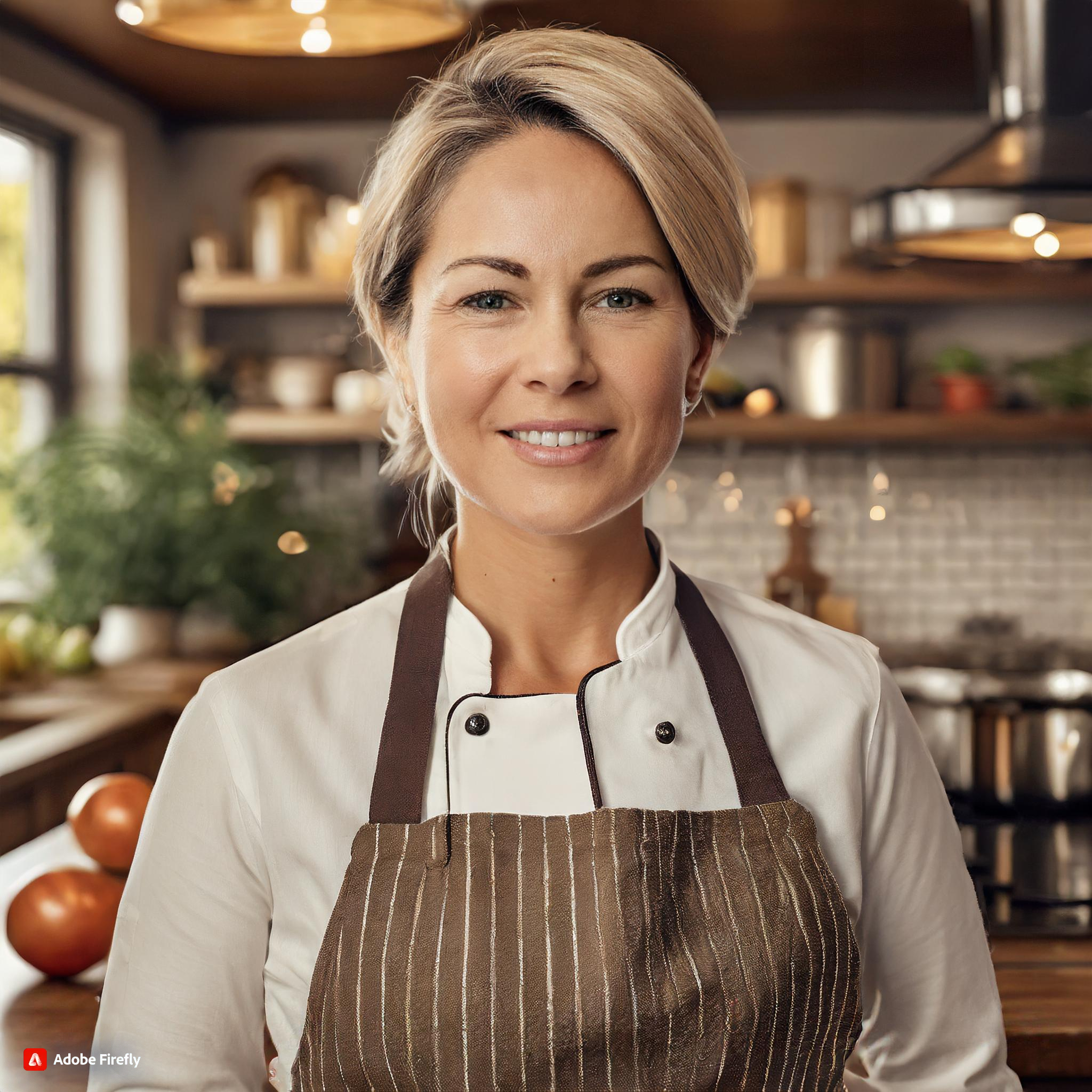Craving comforting bakes without the gluten or animal products? This article on gluten-free plant-based bakes walks you through everything from common baking challenges to helpful ingredient swaps and foolproof rising techniques. Whether you’re new to gluten-free baking or just looking to expand your plant-based repertoire, you’ll find easy-to-follow tips, trusted substitutions, and the know-how to master moist cakes and chewy cookies—no wheat, dairy, or eggs required. Along the way, I’ll share a few stories from my own baking adventures (and mishaps) to keep things real. Let’s jump into Part 1 and explore what makes this kind of baking so rewarding and fun.
Table of Contents
Starting the Journey With Gluten-Free Plant-Based Bakes
Why gluten-free baking holds a special place in my kitchen
My first try at gluten-free plant-based bakes was rough—a lemon cake that came out rubbery and sad. Still, I couldn’t give up. It reminded me of learning to bake with my grandma, standing on a stool, dusted in flour. She didn’t have fancy equipment, just love and a little courage. That same spirit is what keeps me baking today. When I finally got a chocolate cake just right, I realized gluten-free plant-based bakes weren’t just an alternative—they could be every bit as satisfying.
The real challenges behind these bakes
Gluten creates structure, and eggs and dairy bring lift and richness. Without them, textures fall flat or crumble. That’s why many gluten-free plant-based bakes need a thoughtful mix of flours and plant-based binders. Almond flour adds softness, oat flour brings heartiness, and tapioca or arrowroot provide elasticity. I use flaxseed or psyllium husk in place of eggs, often mixed with applesauce or mashed banana to balance moisture. These combos work wonders in my cinnamon rolls or muffins—yes, even without gluten or dairy.
Why this way of baking changed everything for me
As I explored more gluten-free plant-based bakes, I found freedom. I focused less on perfection and more on comfort and flavor. I stopped needing fancy mixers and started working with wholesome ingredients and simple tools. Recipes became lighter, more nourishing, and easier to share. Whether it’s pancakes on a Sunday or a sweet afternoon treat, I know I’m baking something that fits everyone’s needs. One recipe that always reminds me why I started is my vegan gluten-free chocolate cake—a go-to I love passing along.
Substitutions That Work for Gluten-Free Plant-Based Bakes
Smart swaps for a better bake
One of the biggest wins in mastering gluten-free plant-based bakes is knowing your swaps. There’s no one-size-fits-all formula, but there are reliable combos that deliver structure and flavor. For flour, I often use a blend of almond flour, brown rice flour, and tapioca starch. This combo mimics the softness of wheat without the gluten. For binding, ground flaxseed mixed with water (the famous “flax egg”) adds moisture and stability. In sweet treats like muffins or loaves, applesauce or mashed banana also hold things together while adding natural sweetness.

Eggs, dairy, and gluten—out. Taste, texture, and lift—still in.
You don’t need eggs or butter to create delicious gluten-free plant-based bakes. Coconut oil, vegan butter, or avocado make excellent fat replacements. For lift, baking soda and vinegar work together to create rise, especially in quick breads and cakes. If your batter seems heavy, a tablespoon of seltzer water can lighten it up. I’ve used this trick in my no-bake strawberry pie crust, and it’s surprisingly effective.
Why testing matters
These recipes can behave differently depending on the humidity in your kitchen or even how finely your flour is ground. That’s why I recommend testing small batches before doubling. A simple muffin recipe can teach you everything about how your chosen flour blend reacts with plant-based milk or how long it takes to bake evenly. Once you nail the ratios, gluten-free plant-based bakes become second nature.
Common Pitfalls in Gluten-Free Plant-Based Bakes
Why won’t my gluten-free cake rise?
This is one of the most frequent frustrations with gluten-free plant-based bakes. The culprit is usually structure. Without gluten and eggs, there’s little to trap air and support a rise. That’s why it’s critical to use leavening agents like baking soda paired with something acidic (like lemon juice or vinegar). Overmixing can also deflate the batter. Mix gently until just combined, and let it rest a few minutes before baking. I’ve found this especially helpful in cake recipes where you want a tender crumb and a light texture.

Dryness, gumminess, or collapse—what went wrong?
Dryness happens when there’s not enough fat or moisture. Try adding a bit more plant milk, coconut yogurt, or mashed fruit to your next attempt. Gummy textures? That’s often from too much starch or overbaking. Using a toothpick test is a must with gluten-free plant-based bakes—every minute counts. If the middle looks wet but the edges are crisp, tent it with foil and continue baking gently.
Learning from the flops
I’ve had my fair share of fails—flat muffins, sticky loaves, and dough that turned to cement. But each taught me something. I now write notes after every batch: what flours I used, the baking time, the result. Over time, you’ll see patterns and build your personal go-to ratios. One bake that taught me patience was a batch of overnight oats. Not technically baked, but still a great example of how soaking, texture, and balance matter in gluten-free plant-based recipes.
Making Gluten-Free Plant-Based Bakes a Lifestyle Staple
How to eat gluten-free and plant-based every day
Gluten-free plant-based bakes aren’t just for special occasions—they can be part of your daily rhythm. Muffins with almond flour and flaxseed make a filling breakfast. Oat-based cookies sweetened with banana become an energizing snack. Once you find 2–3 base recipes that work, you can customize them with add-ins like berries, nuts, or even shredded veggies. These flexible formats make gluten-free plant-based bakes feel effortless and fun.

Keep your pantry ready, keep your routine easy
A well-stocked pantry is your best friend. I always have oat flour, almond flour, baking powder, flaxseed, and plant milk on hand. These ingredients make it possible to whip up quick breads, bars, or scones without a trip to the store. I also love baking in batches and freezing extras—it’s one of the best ways to keep healthy treats available without daily prep. One recipe I freeze often is my healthy breakfast bowl base as frozen bites—they’re quick to reheat and enjoy.
From occasional bake to everyday nourishment
What started as a workaround for allergies or preferences can become a nourishing lifestyle. Gluten-free plant-based bakes support better digestion, whole-food eating, and the joy of inclusive cooking. Sharing a dessert that fits everyone’s plate—vegan, gluten-free, dairy-free—is deeply satisfying. And best of all? These bakes don’t feel like a compromise. They feel like a win.
FAQs About Gluten-Free Plant-Based Bakes
What are the challenges of gluten-free baking?
The biggest challenge in gluten-free plant-based bakes is the lack of structural ingredients. Gluten and eggs normally provide elasticity, lift, and moisture. Without them, your batter needs extra attention—blending flours, adding binders like flaxseed, and adjusting moisture levels are key to successful results.
How do I eat plant-based and gluten-free at the same time?
Focus on whole ingredients: vegetables, fruits, legumes, nuts, seeds, and gluten-free grains like quinoa and oats. When baking, use tested recipes that combine both principles, like my plant-based comfort foods—many can double as meal or dessert with just a few tweaks.
What should I know before starting gluten-free baking?
Start simple. Stick to one or two flour blends, learn how to use psyllium husk or flaxseed as binders, and measure by weight when possible. Gluten-free plant-based bakes often benefit from letting the batter rest before baking to help hydrate the flours evenly.
Why won’t my gluten-free cake rise?
Without gluten or eggs, you need good leavening. Try a mix of baking soda and vinegar, and don’t overmix. Check oven temperature carefully and allow your batter to rest 10 minutes before baking—this gives it the best chance to rise and set properly.
Conclusion
Gluten-free plant-based bakes may seem intimidating at first, but with the right techniques and ingredients, they become second nature. From choosing your flour blend to perfecting moisture and rise, every bake teaches you something new. I’ve had plenty of burnt edges and sunken middles, but each one led me closer to the kind of baking I truly love simple, nourishing, and joyful. Whether you’re baking for health reasons or just love to experiment, these recipes invite creativity into your kitchen. Stick with it, and gluten-free plant-based bakes might just become your go-to comfort.
Tired of failed cakes and gummy muffins? These gluten-free plant-based bakes actually work—no fluff, just flavor and foolproof results.
Follow us on Facebook for more tips and recipes

Gluten-Free Plant-Based Bakes That Actually Work and Taste Amazing
- Total Time: 40 minutes
- Yield: 8 servings 1x
Description
These gluten-free plant-based bakes are delicious, simple, and ideal for anyone avoiding wheat, dairy, or eggs. Perfect for beginners or seasoned bakers alike.
Ingredients
- 1 cup oat flour
- 1/2 cup almond flour
- 2 tbsp flaxseed meal
- 1/2 cup mashed ripe banana
- 1/3 cup maple syrup
- 1/2 cup plant-based milk
- 1 tsp baking soda
- 1 tsp apple cider vinegar
- 1/4 cup coconut oil
- 1 tsp vanilla extract
- Pinch of salt
Instructions
1. Preheat your oven to 350°F (175°C). Grease or line a muffin tin or loaf pan.
2. Mix flaxseed meal with 5 tbsp water and let sit for 5 minutes to form flax eggs.
3. In a large bowl, whisk together all dry ingredients.
4. In another bowl, combine wet ingredients including the flax eggs.
5. Add wet ingredients to dry and stir gently until just combined.
6. Let the batter sit for 5 minutes to hydrate.
7. Pour into prepared pan and bake for 28–35 minutes.
8. Test with a toothpick; when it comes out clean, remove from oven.
9. Cool in the pan for 10 minutes, then transfer to a wire rack.
10. Slice and enjoy your gluten-free plant-based bakes.
Notes
You can substitute mashed banana with unsweetened applesauce.
Store in an airtight container for up to 3 days or freeze for longer freshness.
- Prep Time: 10 minutes
- Cook Time: 30 minutes
- Category: Baking
- Method: Oven
- Cuisine: American
Nutrition
- Serving Size: 1 slice
- Calories: 190
- Sugar: 7g
- Sodium: 120mg
- Fat: 10g
- Saturated Fat: 3g
- Unsaturated Fat: 6g
- Trans Fat: 0g
- Carbohydrates: 22g
- Fiber: 4g
- Protein: 4g
- Cholesterol: 0mg







